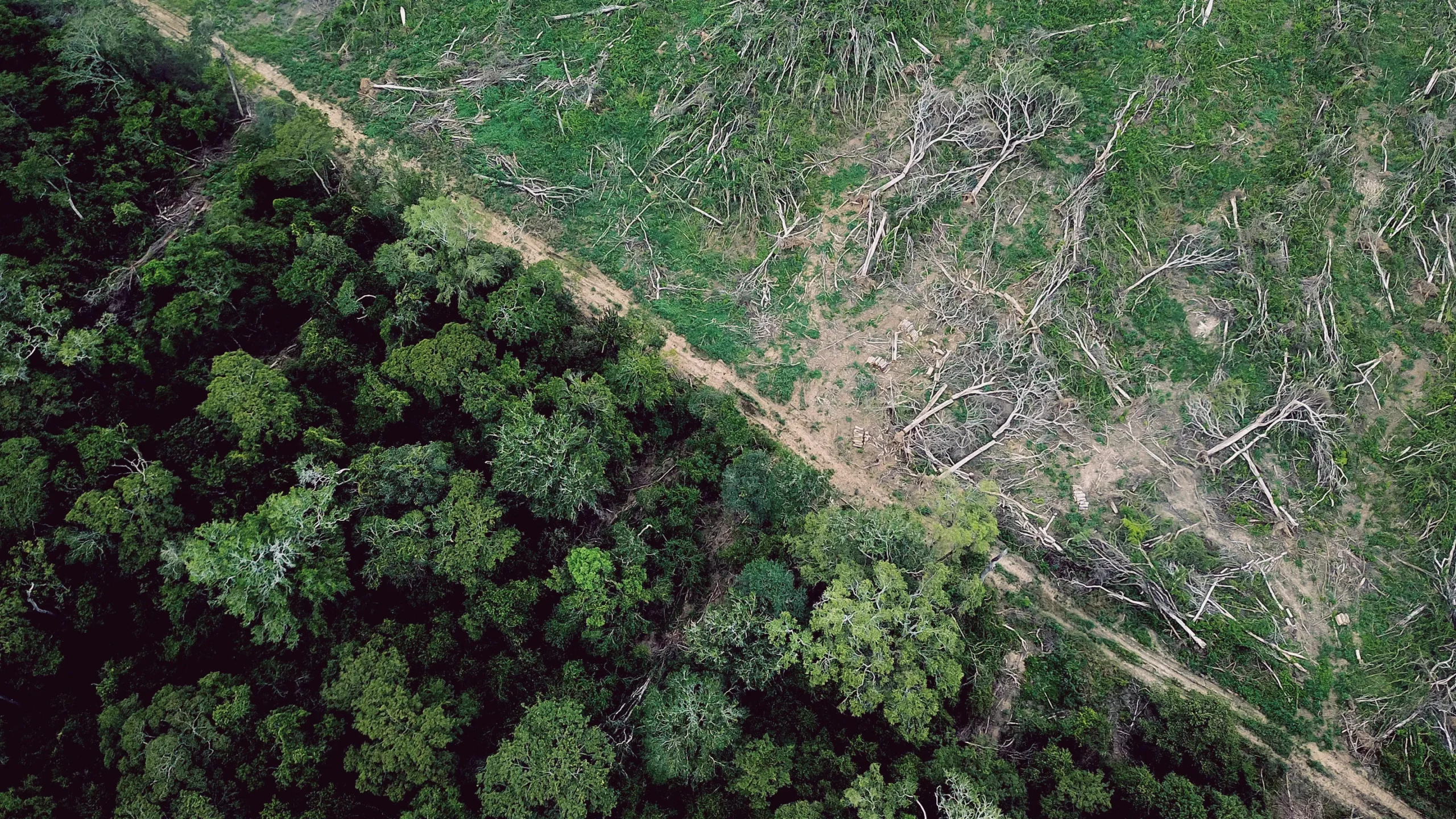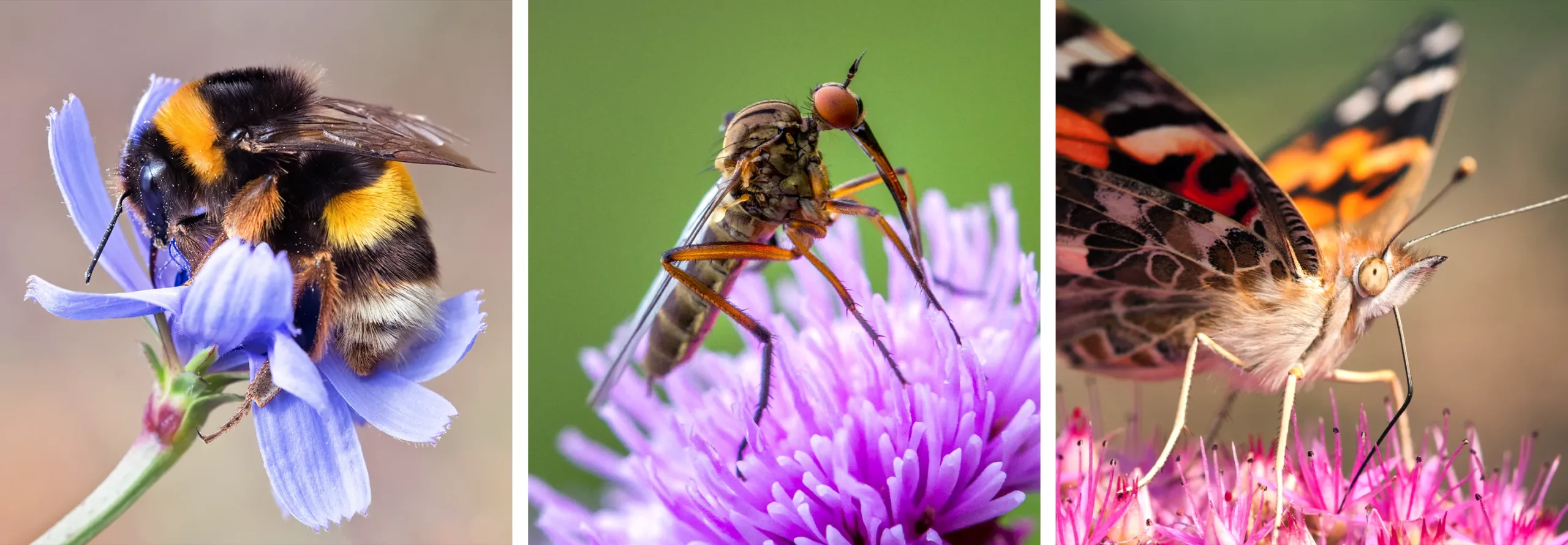Simpler Math Predicts How Close Ecosystems Are to Collapse

The Amazon rainforest and other ecosystems are near “tipping points” that threaten to transform the types of flora and fauna that define them.
Rhett A. Butler / Mongabay
Introduction
Fuzzy bumblebees, like tiny orange sheep, flit between the lilies that blanket the understory of an Argentinian forest, fertilizing the flowers and getting nourishment for themselves. In an ancient hay meadow in England, dance flies — looking more like bulky mosquitoes than ballerinas — hunt for blossoms with pollen, ignoring the nectar-rich flowers nearby. On a rocky island in the Seychelles, bees and moths pick their flowers carefully; the number and types of pollinators affect which plants cling to the cliffs.
These kinds of interactions between species, which field ecologists dutifully record in their observations, can seem inconsequential, taken individually. In aggregate, however, they describe the detailed dynamics of the species interactions that make up an ecosystem.
Those dynamics are critical. Many natural environments are incredibly complex systems wavering near a “tipping point” of nearly irreversible transition from one distinct state to another. Each disruptive shock — caused by wildfires, storms, pollution and deforestation but also by species loss — perturbs an ecosystem’s stability. Past the tipping point, recovery is often impossible.
It’s like tilting a glass of water, explained György Barabas, a theoretical ecologist at Linköping University in Sweden. “If we push it a little bit, it will return,” he said. “But if we push it too far, it will tip over.” Once the glass is toppled over, a small push can’t return the glass to an upright position or refill it with water.
Understanding what determines these environmental tipping points and their timing is increasingly urgent. A widely cited 2022 study found that the Amazon rainforest is teetering on the edge of a transition into dry grassland, as deforestation and climate change make drought more frequent and severe over larger areas. The effects of that transition could ripple out globally to other ecosystems.
A recent breakthrough in the mathematical modeling of ecosystems could make it possible for the first time to estimate precisely how close ecosystems are to disastrous tipping points. The applicability of the discovery is still sharply limited, but Jianxi Gao, a network scientist at Rensselaer Polytechnic Institute who led the research, is hopeful that in time it will be possible for scientists and policymakers to identify the ecosystems most at risk and tailor interventions for them.
‘Now You Have a Number’
Mathematical models can in principle allow scientists to understand what it will take for a system to tip. This predictive capability is often discussed in the context of climate models and the effect of warming on big geophysical systems like the melting Greenland ice sheet. But the tipping of ecosystems like forests and meadows is arguably harder to forecast because of the extraordinary complexity that comes with so many distinct interactions, said Tim Lenton, who works on climate tipping points at the University of Exeter in England.
Thousands of calculations may be needed to capture the distinctive interactions of every species in a system, Barabas said. The calculations make the models immensely complex, especially as the size of the ecosystem increases.

Many ecosystems depend on mutualistic interactions between pollinating insects (from left: a bumblebee, a dance fly and a butterfly) and the varieties of flowers that they visit. Differences between these interactions matter to models of the systems.
Heather Jane / Shutterstock (left); Rebecca Cole / Alamy (center); jctabb / Shutterstock (right)
Last August in Nature Ecology & Evolution, Gao and an international team of colleagues showed how to squish thousands of calculations into just one by collapsing all the interactions into a single weighted average. That simplification reduces the formidable complexity to just a handful of key drivers.
“With one equation, we know everything,” Gao said. “Before, you have a feeling. Now you have a number.”
Previous models that could tell whether an ecosystem might be in trouble relied on early warning signals, such as a decreasing recovery rate after a shock. But early warning signals can give only a general sense that an ecosystem is approaching the edge of a cliff, said Egbert van Nes, an ecologist at Wageningen University in the Netherlands who specializes in mathematical models. The new equation from Gao and his colleagues uses early warning signals too, but it can tell exactly how close ecosystems are to tipping.
Even two ecosystems showing the same warning signals, however, are not necessarily equally close to the brink of collapse. Gao’s team therefore also developed a scaling factor that allows better comparisons.
As a test of their new approach to modeling, the researchers pulled data about 54 real ecosystems from an online database of field research observations from locations around the world — including the forests in Argentina, the meadows in England and the rocky cliffs in the Seychelles. Then they ran that data through both the new model and older models to confirm that the new equation worked properly. The team found that their model works best for homogeneous ecosystems, becoming less accurate as ecosystems become more diverse.
Testing the Assumptions
Barabas pointed out that the newly derived equation rests on the assumption that interactions between species are much weaker than the interactions of individuals within a species. It’s an assumption strongly supported by the ecology literature — but ecologists frequently disagree about how best to determine the frequency and strength of species interactions in different networks.
Such differences in the assumptions of a model are not always a problem. “Often mathematics can be surprisingly forgiving,” Barabas said. What’s important is understanding how the assumptions constrain the usefulness of the method and the accuracy of the resulting predictions. Gao’s equation becomes less accurate as interspecific interactions become stronger. Currently, the model also only works on ecological networks of mutualistic interactions in which species benefit each other, as bees and flowers do. It doesn’t work for predator-prey networks, which depend on different assumptions. But it can still apply to many ecosystems worth understanding.
Moreover, since the August publication, the researchers have already figured out two ways to make the calculation more accurate for heterogeneous ecosystems. They’re also incorporating other types of interactions within an ecosystem, including predator-prey relationships and a type of interaction called competitive dynamics.
It took 10 years to develop this equation, Gao said, and it will take many more for the equations to accurately predict outcomes for real-world ecosystems — years that are precious because the need for interventions seems pressing. But he isn’t disheartened, perhaps because, as Barabas noted, even foundational models that provide a proof of concept or a simple illustration of an idea can be useful. “By making it easier to analyze certain types of models … they can help even if they are not used to make explicit predictions for real communities,” Barabas said.
Lenton agreed. “When you’re faced with complex systems, from a position of relative ignorance, anything is good,” he said. “I’m excited because I feel like we’re getting really toward the practical point of actually being able to do better.”
The team recently showed the model’s usefulness by applying it to data from a seagrass restoration project in the mid-Atlantic that dates back to 1999. The researchers determined the specific amount of seagrass that needed restoration for the ecosystem to recover. In the future, Gao plans to work with ecologists to run the model on Lake George in New York, which Rensselaer often uses as a test bed.
Gao’s hope is that someday the model can help inform decisions about conservation and restoration efforts to prevent irreversible damage. “Even when we know the system is declining,” he said, “we still have time to do something.”
Correction: March 7, 2023
In an earlier version of the article, the image of the butterfly was misidentified as a moth. The caption has been corrected.



